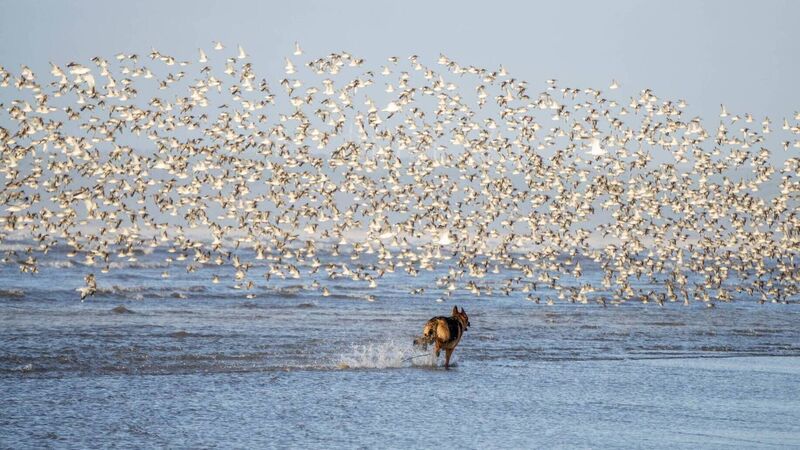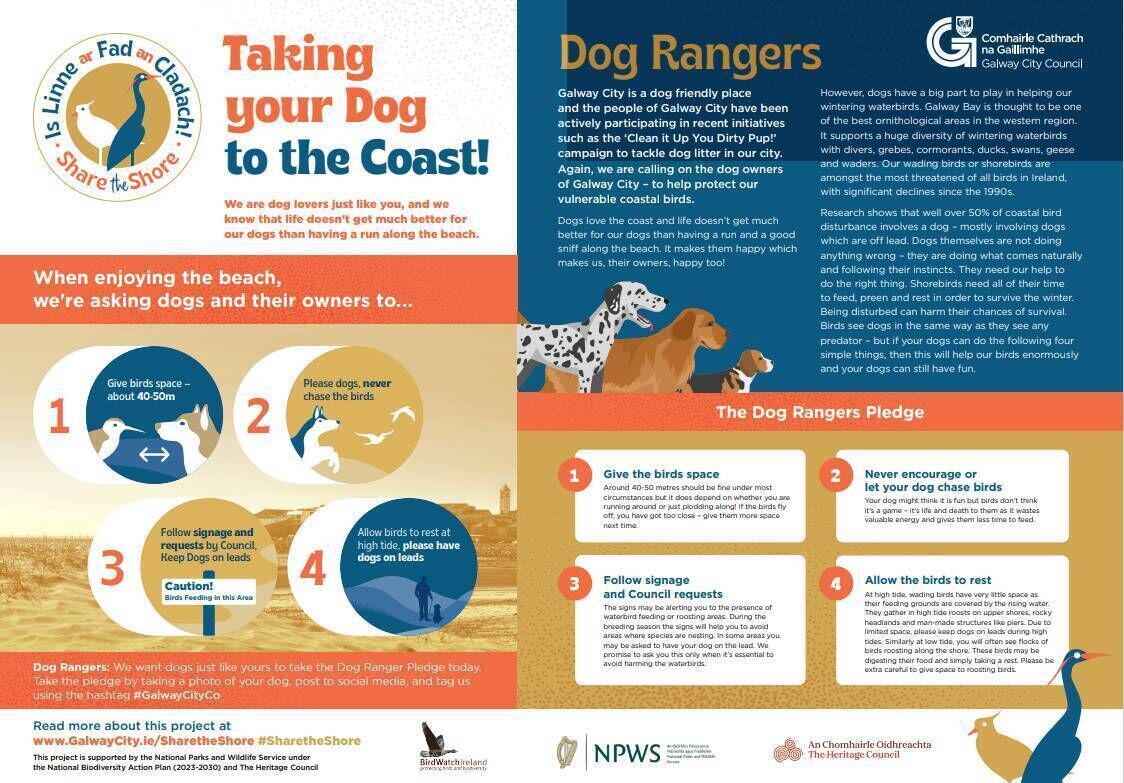Donal Hickey: Birds know how to share the shore — do dog owners?

Research shows that well over 50% of coastal bird disturbance involves a dog — mostly dogs which are off lead. Shorebirds need all of their time to feed, preen and rest in order to survive the winter. Being disturbed can harm their chances of survival
As hundreds of thousands of wintering waterbirds begin to arrive on our shores, people are being urged to be careful not to disturb them.
Experts such as waterbird ecologist, Lesley Lewis, are becoming ever more concerned as a result of increasing recreational use of coastal habitats and other wetlands, including Cork Harbour, as the human population grows and large centres of population further expand.
An estimated two million people visit the North Bull Island, in Dublin, annually, for example.
“Many of us love the vast expanse of our shorelines, with plenty of space for our dogs to run freely. But it is time to stop and think seriously about the damage that this causes, and to learn to responsibly share the shore with the animals that make it their home," she says.
Our mild, wet winters attract an estimated 750,000 waterbirds which come largely from colder northern climes, including Brent geese, whooper swans and Greenland white-fronted geese, to name a few species.

In an article for Birdwatch, Ms Lewis, who has taken part in surveys for that and other organisations and who has researched the impact of disturbance on waterbirds, sets out to debunk myths regarding people’s interaction with these birds.
Many activities along shorelines and inland wetlands have the potential to cause disturbance to birds, including shore-based activities such as walking, or running, with or without dogs being present.
Having slowly crept up and waited for the incoming tide to push these waders closer in so they got used to me, a woman arrived and kept throwing sticks in the sea for her dogs, then walked right past me flushing every bird in sight. Just stared at me stupidly when I remonstrated. pic.twitter.com/t2Ar129okQ
— Richard T. Mills (@RichardTMills) June 6, 2023
Then, there are vehicles along the shoreline and water-based activities with power boats, jet skis and kite surfing. Drones can have negative effects, while bird-watchers and photographers can also cause disturbance, she points out.
One myth is that our avian visitors can fly away from sources of danger. But it’s not that simple. The birds are here to rest, feed and be in good condition to make the long journey back to their breeding grounds in spring.
However, if they are constantly disturbed, they use up energy reserves while flying around trying to find other spaces and waste valuable feeding time.
“Being forced to move due to disturbance results in the birds moving to areas where the ‘larder’ is not as full, or where there are many more birds competing to eat the same prey," Ms Lewis says.
“The outcome of disturbing foraging waterbirds is that their vital energy intake during winter and body condition may be reduced. Some birds may simply not be able to find enough to eat."
Some myths shattered by Ms Lewis border on the incredible — such as claiming there's nothing wrong with walking, or running, through a flock of birds. Even more ridiculous is a belief that birds enjoy being chased by dogs!








